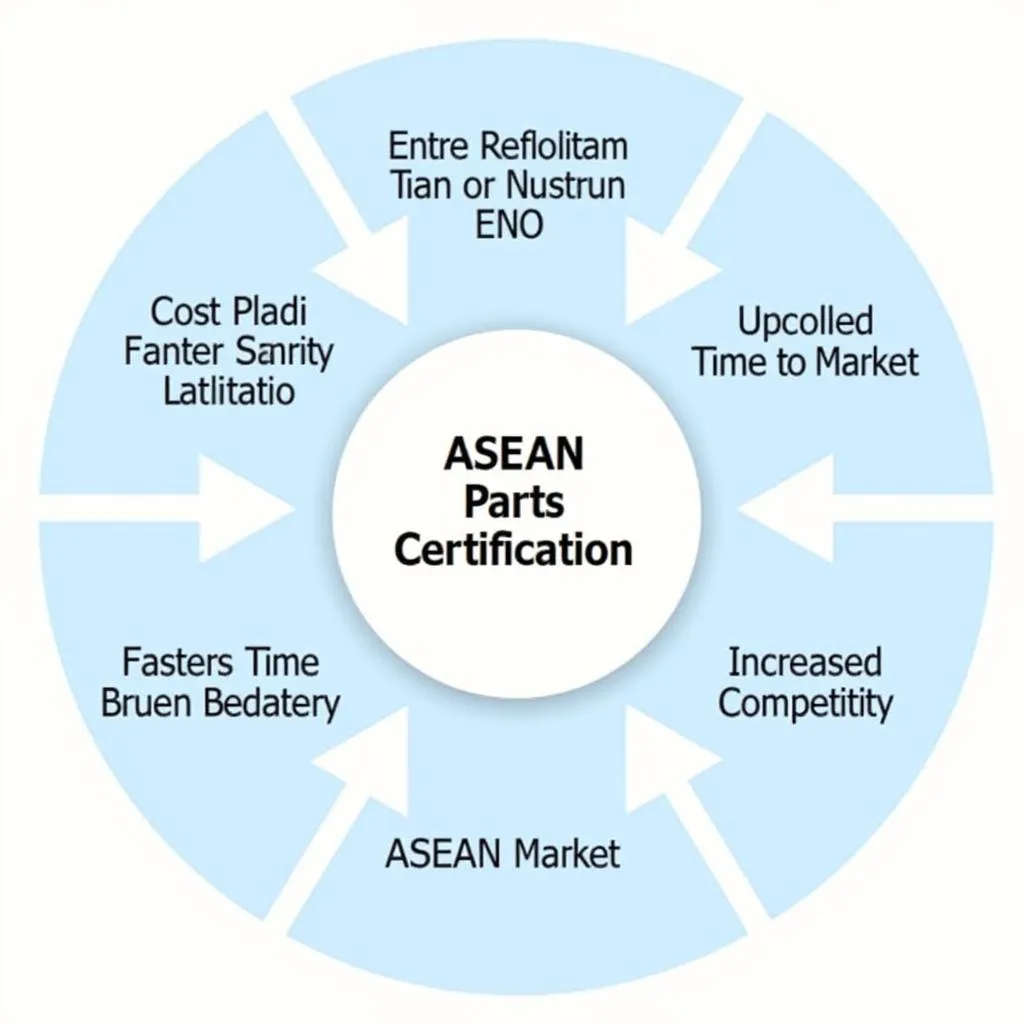ASEAN parts certification, more commonly known as ASEAN MRA (Mutual Recognition Arrangement) for parts and components, is a key initiative aimed at streamlining trade and enhancing economic integration within the ASEAN region. This agreement allows manufacturers in one ASEAN member state to have their automotive parts and components certified in their own country, and that certification will be recognized by other ASEAN member states. This eliminates the need for duplicate testing and certification procedures, significantly reducing costs and time for automotive businesses operating within the ASEAN market.
Understanding ASEAN MRA for Automotive Parts
The automotive industry is a significant contributor to the ASEAN economy. To foster growth and competitiveness in this sector, ASEAN implemented the MRA on Automotive Products. This agreement, which encompasses parts and components, focuses on harmonizing vehicle regulations and standards across member states. The MRA aims to:
- Facilitate freer trade: By eliminating technical barriers to trade, such as varying standards and regulations.
- Enhance competitiveness: By enabling ASEAN automotive manufacturers to benefit from economies of scale and access to a wider market.
- Attract investment: By creating a more predictable and business-friendly environment for automotive industry players.
How ASEAN Parts Certification Works
The ASEAN parts certification process under the MRA involves several key stakeholders:
- Applicant: Typically, the manufacturer or their authorized representative who applies for certification.
- Testing Laboratory: An accredited laboratory within an ASEAN member state that conducts the necessary tests according to the agreed-upon standards.
- Certification Body: An authorized body within an ASEAN member state that reviews the test reports and issues the certification if all requirements are met.
Once a part or component receives certification in one ASEAN member state, it is deemed to comply with the requirements of all other participating countries. This eliminates the need for duplicate testing and certification processes, saving time and resources.
Benefits of ASEAN Parts Certification
 Benefits of ASEAN Parts Certification
Benefits of ASEAN Parts Certification
ASEAN parts certification provides numerous advantages for automotive businesses:
- Reduced Costs: Eliminating the need for multiple testing and certification processes leads to significant cost savings.
- Faster Time-to-Market: Streamlined procedures accelerate the product launch process, enabling businesses to reach the market faster.
- Enhanced Competitiveness: ASEAN parts certification enhances product credibility and competitiveness within the ASEAN market.
- Access to a Wider Market: Certification opens doors to a market of over 600 million consumers across the ASEAN region.
- Increased Investment: The harmonized regulatory environment makes the ASEAN region more attractive to foreign investment.
Challenges and Future Outlook
While the ASEAN MRA for automotive parts offers significant advantages, challenges remain:
- Implementation Discrepancies: Variations in implementation and interpretation of the MRA across member states can create confusion and delays.
- Non-Tariff Barriers: Non-tariff barriers, such as customs procedures and technical regulations, can still hinder trade.
- Lack of Awareness: Some businesses remain unaware of the benefits and procedures related to ASEAN parts certification.
Despite these challenges, the future of ASEAN parts certification appears promising. ASEAN is continuously working to address the existing issues and further strengthen the MRA. Initiatives include enhancing information sharing, promoting capacity building, and streamlining customs procedures.
 Future of ASEAN Parts Certification
Future of ASEAN Parts Certification
Conclusion
ASEAN parts certification plays a vital role in promoting trade and economic integration within the ASEAN region. By harmonizing standards and streamlining certification procedures, the MRA benefits automotive businesses by reducing costs, accelerating time-to-market, and expanding market access. While challenges remain, the ongoing efforts to strengthen the MRA promise a brighter future for the ASEAN automotive industry.

